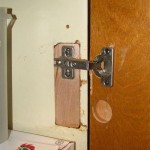Dishwasher Kitchen Cabinet Installation: A Comprehensive Guide
The installation of a dishwasher within kitchen cabinetry is a common home improvement project, frequently undertaken during kitchen renovations or as a replacement for an older appliance. A successful installation requires careful planning, a thorough understanding of spatial requirements, adherence to safety protocols, and the correct execution of plumbing and electrical connections. This article provides a detailed guide to the process, covering preparatory steps, installation procedures, and essential considerations for ensuring a properly functioning and aesthetically integrated dishwasher within the existing kitchen cabinetry.
Before commencing any installation work, it is imperative to verify that the selected dishwasher is compatible with the existing kitchen layout. This includes confirming that the appliance dimensions will fit within the designated cabinet space and that the necessary plumbing and electrical connections are accessible and compliant with local building codes. Failure to address these preliminary checks can result in significant delays, additional expenses, and potential safety hazards.
The initial stage involves preparing the designated cabinet space. This typically includes removing any existing cabinets or drawers that occupy the intended area. Cleaning the surrounding surfaces and ensuring a level base is crucial for the stable and proper positioning of the dishwasher. In some instances, minor modifications to the adjacent cabinets may be necessary to accommodate the dishwasher's dimensions.
Key Point 1: Essential Pre-Installation Steps
The success of a dishwasher installation hinges on meticulous preparation. Several essential steps must be completed before attempting to physically install the appliance. These steps ensure compatibility, safety, and a smooth installation process.
Firstly, accurate measurements of the available space are paramount. Compare the dimensions of the dishwasher with the cabinet opening, accounting for any potential obstructions such as plumbing lines or electrical wiring. Leave adequate clearance around the appliance for ventilation and ease of maintenance. Most dishwashers require a minimum opening height, width, and depth to fit correctly. These measurements are usually provided in the dishwasher's specifications sheet.
Secondly, verify the plumbing connections. Check the existing hot water supply line and drainpipe. Ensure they are in good condition and accessible. If necessary, install new supply lines or drainpipes that are compatible with the dishwasher's connections. It is common to use a dedicated hot water supply valve and a high loop drain configuration to prevent backflow contamination.
Thirdly, confirm the electrical requirements. Dishwashers typically require a dedicated 120-volt circuit with a grounded outlet. Verify that the existing electrical circuit meets these requirements and that it is properly grounded. If not, a qualified electrician should install a new circuit before proceeding with the installation. Always disconnect the power supply at the circuit breaker before working with electrical connections.
Fourthly, gather all necessary tools and materials. This includes a wrench, pliers, screwdrivers, level, measuring tape, drill, safety glasses, gloves, and any specific installation hardware provided with the dishwasher. Having all the tools readily available will streamline the installation process and minimize delays.
Finally, review the manufacturer's installation instructions. These instructions provide specific guidance on the installation procedures for the particular dishwasher model. Adhering to these instructions is crucial for ensuring proper installation and maintaining the appliance's warranty. Understanding the instructions beforehand will facilitate a more efficient and accurate installation.
Once these pre-installation steps are complete, the dishwasher is ready to be carefully maneuvered into the prepared cabinet space. Exercise caution to avoid damaging the appliance or the surrounding cabinetry during this process.
Following the correct sequence of steps is critical for a successful installation. This includes connecting the water supply line, the drain hose, and the electrical wiring in the proper order, ensuring that all connections are secure and leak-proof.
Key Point 2: Correctly Connecting Plumbing and Electrical Systems
Connecting the dishwasher to the plumbing and electrical systems is a critical stage that requires precision and attention to detail. Incorrect connections can lead to water leaks, electrical hazards, and appliance malfunction. It is essential to follow safety guidelines and adhere to local plumbing and electrical codes.
The hot water supply line should be connected using a flexible water supply hose. Ensure that the hose is the correct length and diameter for the dishwasher's connection. Apply Teflon tape to the threaded connections to create a watertight seal. Tighten the connections using a wrench, but avoid over-tightening, which can damage the fittings. After connecting the water supply line, slowly turn on the water supply and check for any leaks. If leaks are detected, tighten the connections further or replace the Teflon tape.
The drain hose should be connected to the kitchen sink's drainpipe or a garbage disposal unit. A high loop configuration is commonly used to prevent backflow of wastewater into the dishwasher. Secure the drain hose to the drainpipe using a hose clamp. Ensure that the drain hose is not kinked or obstructed, as this can impede drainage and cause the dishwasher to malfunction.
The electrical wiring should be connected according to local electrical codes. Typically, dishwashers require a three-wire connection: black (hot), white (neutral), and green (ground). Disconnect the power supply at the circuit breaker before making any electrical connections. Connect the wires to the corresponding terminals in the dishwasher's junction box. Tighten the terminal screws securely. Replace the junction box cover and ensure that the wiring is protected from damage.
After connecting the plumbing and electrical systems, carefully inspect all connections for leaks or potential hazards. Verify that the dishwasher is properly grounded to prevent electrical shock. Turn on the power supply at the circuit breaker and test the dishwasher to ensure that it is functioning correctly. Address any issues or concerns promptly to prevent further problems.
Proper grounding is extremely important, as this protects the user from electrical shock in the event of a fault within the appliance. A properly grounded dishwasher will channel any stray electrical current safely to ground, minimizing the risk of injury.
Once all connections are secured, the dishwasher should be tested for proper operation. Run a complete wash cycle to verify that the appliance is filling with water, washing effectively, draining properly, and drying the dishes as intended. Observe the dishwasher closely during the test cycle to identify any potential issues, such as leaks, unusual noises, or error codes.
The leveling of the dishwasher is a crucial step in the installation process. An improperly leveled dishwasher can experience operational issues, including uneven water distribution, excessive noise, and potential damage to the appliance itself. Adjustment of the leveling feet is typically required to ensure the dishwasher sits perfectly level within the cabinet opening.
Key Point 3: Ensuring Proper Leveling and Securing the Dishwasher
Achieving proper leveling and securing the dishwasher within the cabinet opening are final steps that contribute to the appliance's stability, performance, and longevity. A level dishwasher operates more efficiently, reduces noise and vibration, and ensures that dishes are washed and dried evenly. Securing the dishwasher prevents it from shifting or moving during operation, further enhancing its stability and preventing damage to the appliance or surrounding cabinetry.
Use a level to check the dishwasher's levelness, both front to back and side to side. Most dishwashers have adjustable leveling feet that can be turned to raise or lower the appliance. Turn the leveling feet until the dishwasher is perfectly level. Check the levelness again after each adjustment. It may be necessary to use shims under the leveling feet to achieve perfect levelness on uneven floors.
Once the dishwasher is level, secure it to the surrounding cabinetry using mounting brackets or screws. The specific method of securing the dishwasher will vary depending on the appliance model and the type of cabinetry. Typically, the dishwasher is secured to the countertop or the adjacent cabinets. Follow the manufacturer's instructions for securing the dishwasher. Ensure that the mounting brackets or screws are securely fastened to prevent the dishwasher from moving during operation.
After securing the dishwasher, double-check all connections and adjustments. Verify that the water supply line, drain hose, and electrical wiring are still properly connected and secure. Ensure that the dishwasher door opens and closes smoothly and that there is no interference with the surrounding cabinetry. Run another test cycle to confirm that the dishwasher is operating correctly and that there are no leaks or other issues.
Finally, install any trim or molding that may be necessary to conceal gaps or imperfections around the dishwasher. This will enhance the appearance of the installation and create a seamless integration with the surrounding cabinetry. Clean up any debris or materials from the installation process and dispose of them properly.
A properly installed dishwasher should operate quietly and efficiently, providing years of reliable service. Regular maintenance, such as cleaning the filter and checking the spray arms, will help to prolong the appliance's lifespan and maintain its performance.
Furthermore, verifying the correct door alignment is important. The dishwasher door should open and close smoothly, without binding or rubbing against the surrounding cabinetry. If the door is misaligned, adjust the hinges or mounting brackets until it is properly aligned. A misaligned door can cause leaks and other problems.
The final step involves a thorough inspection of the installation. Check all connections for leaks, electrical hazards, and other potential problems. Ensure that the dishwasher is operating correctly and that all features are functioning as intended. If any issues are detected, address them promptly to prevent further complications.
By following these detailed steps and adhering to safety guidelines, a successful dishwasher installation can be achieved. This will result in a functional and aesthetically pleasing addition to the kitchen, enhancing convenience and efficiency in daily tasks.

Installing A Dishwasher In Existing Cabinets Where There Was None

Installing A New Dishwasher In The Kitchen

Installing A Dishwasher In Existing Cabinets Where There Was None

Installing A Dishwasher In Existing Cabinets Where There Was None

Custom Diy Dishwasher Install Into Existing Cabinets Gardenfork Eclectic

Diy Dishwasher End Panel Ana White

Creating A Wrap Around Cabinet Moving The Dishwasher Kitchen Renovation House Of Hepworths

Custom Diy Dishwasher Install Into Existing Cabinets Gardenfork Eclectic

Creating A Wrap Around Cabinet Moving The Dishwasher Kitchen Renovation House Of Hepworths

How To Tips Install Dishwasher Into A Built In Cabinet
Related Posts








